

Okinawa, Japan, is a string of islands stretching between Japan and Taiwan. It is a unique fusion of breathtaking landscapes, rich history, and vibrant culture that stands apart from mainland Japan.
Known for its subtropical climate, pristine beaches, and longevity of its residents, Okinawa offers many activities and sights that cater to every type of traveler. Visitors can visit the Okinawa Churaumi Aquarium and engage in water sports like kayaking and surfing.
Whether you're a history buff eager to explore ancient castles, a nature enthusiast ready to dive into the crystal-clear waters, or a foodie looking to indulge in local delicacies, this island paradise has something for everyone. In this blog post, we'll guide you through the top attractions and activities, ensuring you know precisely what to do in Okinawa to make your visit unforgettable.
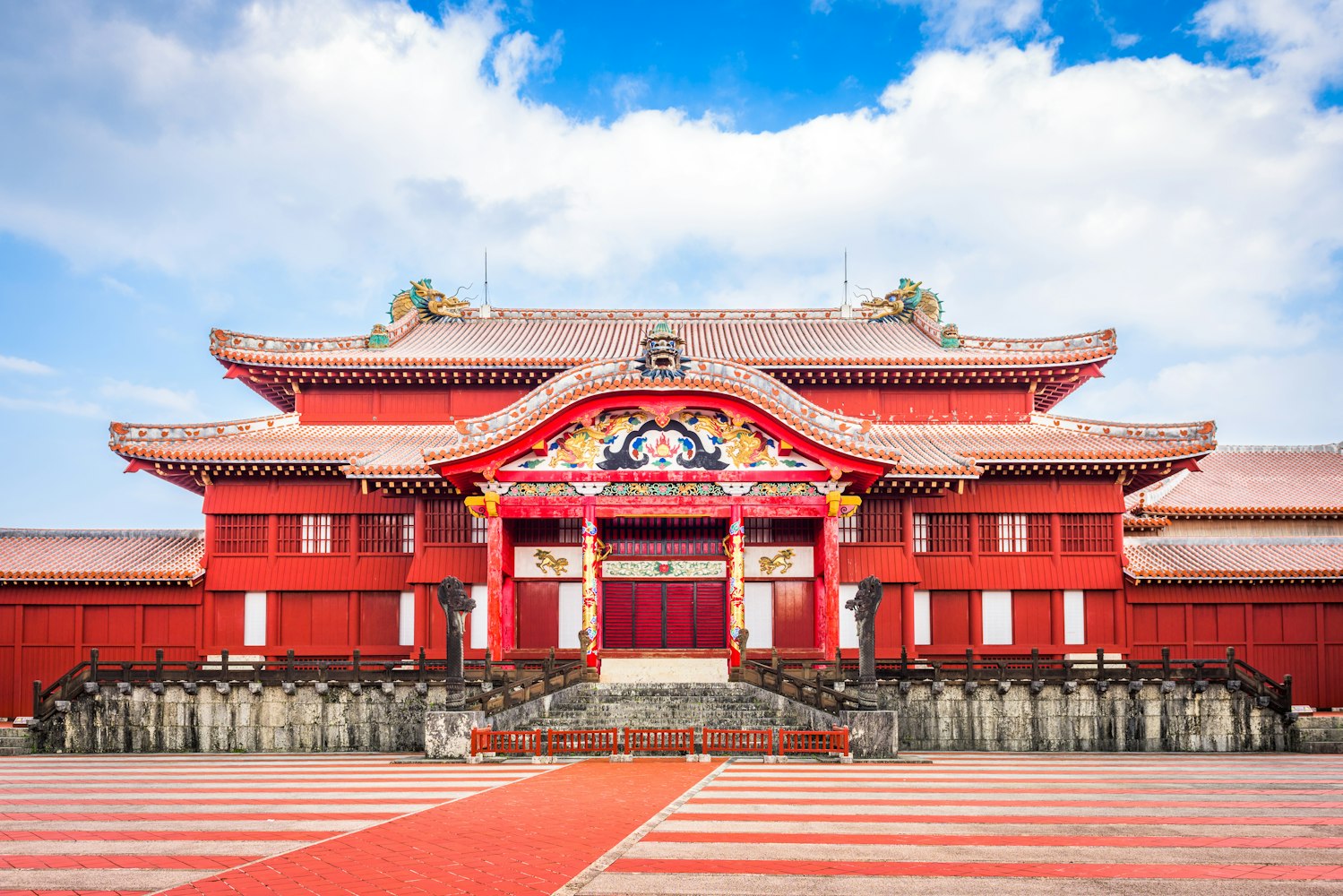
Shuri Castle is a monumental emblem of Okinawa's rich history and resilience. Designated a UNESCO World Heritage Site, this regal structure served as the palace of the Ryukyu Kingdom for several centuries before Japan annexed the islands in 1879.
The castle's architecture fuses Japanese and Chinese influences, reflecting the kingdom's extensive trading relationships. Despite being severely damaged during World War II and a recent fire in 2019, restoration efforts continue to preserve its historical and cultural significance.
Visiting Shuri Castle shows the Ryukyu era's royal traditions and architectural mastery. Additionally, the Okinawa Prefectural Museum & Art Museum plays a crucial role in educating visitors about the history of the Ryukyu Kingdom, making it an essential stop for those interested in cultural exploration.
Located at the southern tip of the island, the Okinawa Peace Memorial Park is a poignant tribute to the lives lost during the Battle of Okinawa, one of the bloodiest conflicts of World War II. The park's main feature, the Cornerstone of Peace, is an expansive series of stone plates inscribed with the names of all who died in the battle, regardless of nationality.
This solemn site commemorates the past and serves as a powerful reminder of the devastation of war and the ongoing pursuit of peace.
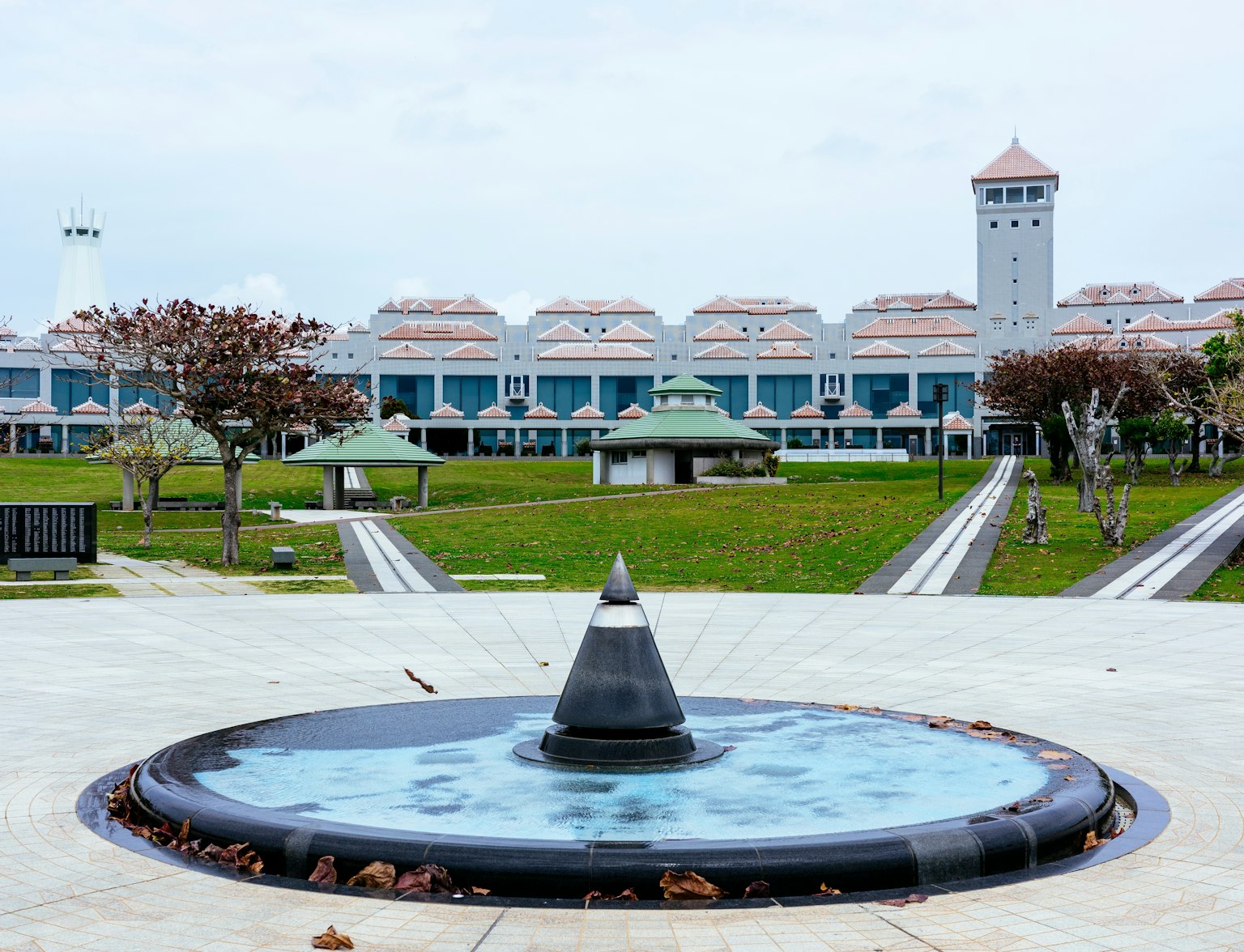
Visit Okinawa Peace Memorial Park with this tour.
Ryukyu Mura is a vibrant living museum that offers an immersive experience of traditional Ryukyu culture. Visitors can walk through a reconstructed village that showcases the typical Okinawan way of life from centuries ago.
Traditional houses, pulled from various parts of the island and rebuilt on-site, host a variety of cultural demonstrations and workshops. From weaving and pottery to the performance of traditional Ryukyu dances and music, Ryukyu Mura provides a hands-on approach to understanding the rich cultural tapestry of Okinawa.
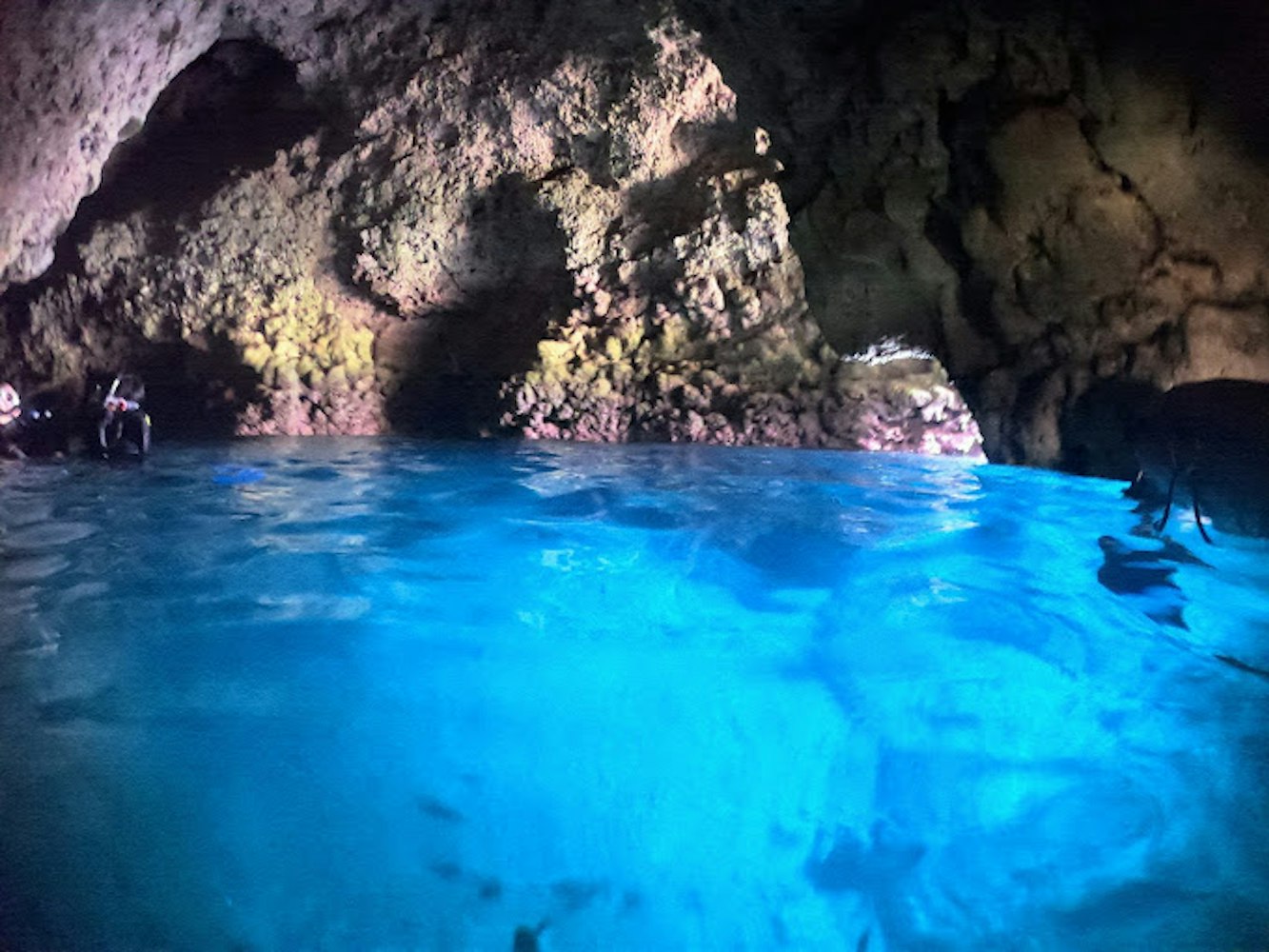
Located on the coast of Cape Maeda in Okinawa, The Blue Cave is a natural marvel renowned for its mesmerizing hues of blue light illuminating the underwater environment. This effect is created by sunlight reflecting through the clear water and bouncing off the white sandy floor, filling the cave with a luminous azure glow.
Popular among snorkelers and divers, The Blue Cave offers a surreal underwater experience. Here, one can swim alongside schools of tropical fish and explore rich coral formations.
The cave's accessibility to beginners makes it a must-visit for anyone seeking a unique aquatic adventure.
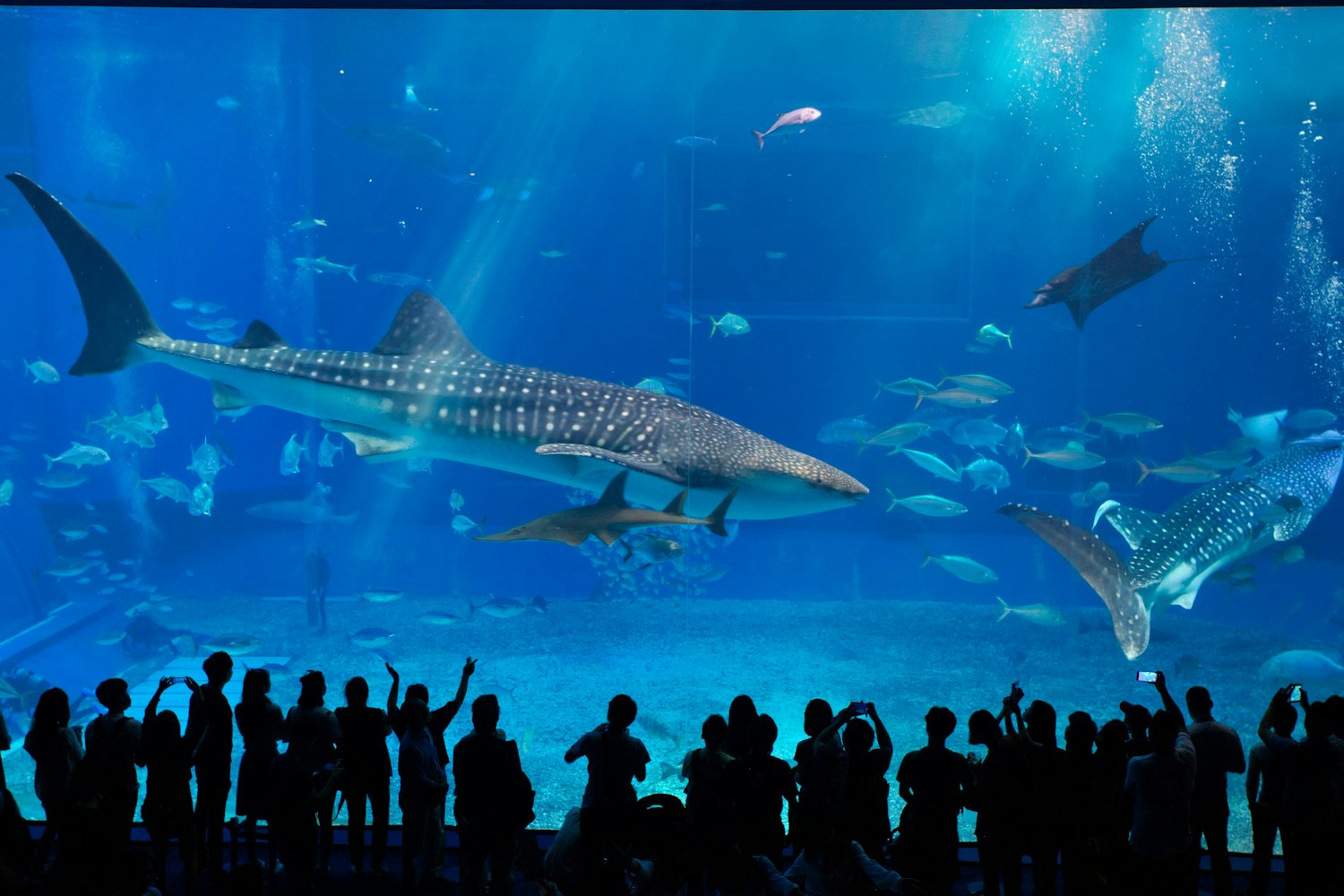
Considered one of the world's largest and most impressive aquariums, the Okinawa Churaumi Aquarium is a must-see for anyone visiting the region. Home to a vast array of marine life, the aquarium is famous for its massive Kuroshio Tank, which houses large species like manta rays and the elusive whale shark.
Interactive experiences, including touch pools and feeding demonstrations, allow visitors to get up close with creatures from deep and shallow waters. A visit to the Churaumi Aquarium provides a deeper understanding of the marine biodiversity that thrives around the Okinawan islands and stresses the importance of conservation efforts.
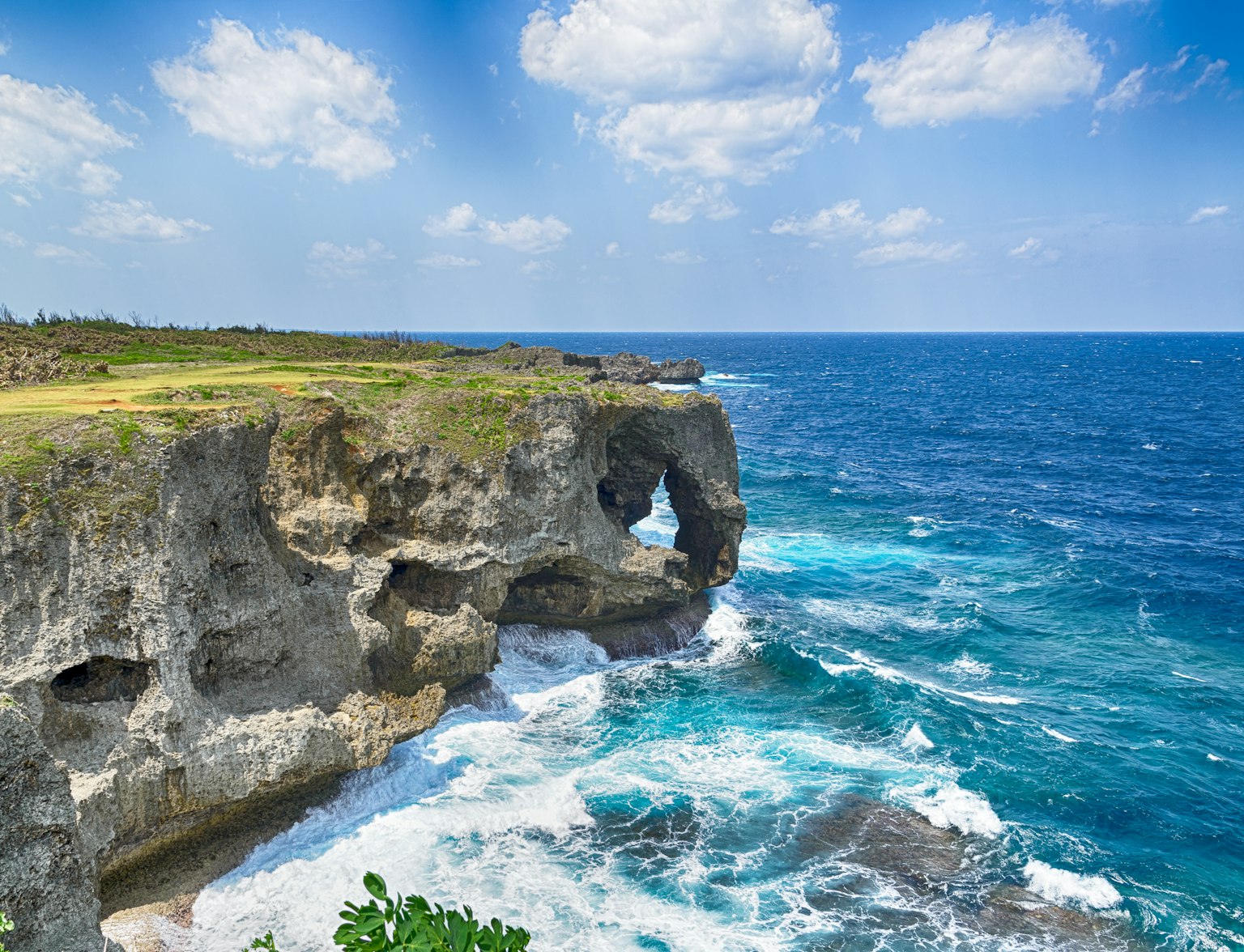
Experience the island's unique blend of nature and culture.
Almost entirely covered in dense jungle and mangrove forests, Iriomote Island, part of the Yaeyama Islands, offers a wild escape into nature and unique cultural experiences. It is the second largest island in Okinawa Prefecture.
Still, it remains one of the least developed, providing a haven for various endemic species and rare wildlife, including the Iriomote cat, a critically endangered wildcat found nowhere else in the world. Visitors can explore the island's rugged terrain by taking guided tours, including kayaking through mangrove-lined rivers, trekking to cascading waterfalls, or venturing into the dense jungle.
Iriomote is an ideal destination for eco-tourists and adventure seekers looking to experience the untouched beauty of Okinawa's natural landscapes.

Naminoue Beach is the only beach in Naha, in the heart of Naha city. It uniquely blends the natural beauty of Okinawa with the convenience of urban accessibility.
As the only beach in Naha, it offers a quick seaside escape for those looking to enjoy the sun and sand without venturing far from city amenities. The picturesque Naminoue Shrine, perched on a cliff above the beach, overlooks the beach and adds a cultural touch to the scenic view.
While swimming and sunbathing are popular, visitors should be mindful of the urban setting and occasionally busier waters.
Known for its crystal-clear waters and expansive coral reefs, Miyako Island is a paradise for beach lovers and diving enthusiasts. The island boasts some of the most beautiful beaches in Japan, such as Maehama Beach and Yoshino Beach, which are celebrated for their powdery white sand and turquoise waters.
Scuba diving is a predominant activity here, with excellent visibility and a colorful underwater world with vibrant coral gardens and diverse marine life. Whether snorkeling just off the shore or diving into deeper waters, Miyako Island offers a mesmerizing experience for everyone.
You can even encounter sea turtles while snorkeling and diving, making it an unforgettable adventure.

Kabira Bay, located on Ishigaki Island, is renowned for its stunning landscapes and clear emerald waters. These make it an ideal spot for stand-up paddleboarding (SUP) and kayaking.
These activities provide a peaceful yet active way to explore the bay's beauty at a slower pace, allowing for an intimate and refreshing connection with nature. Paddleboarding and kayaking in Kabira Bay offer a unique perspective of the island's lush coastlines and the opportunity to glide over coral reefs teeming with marine life.
These activities perfectly blend adventure and tranquility in Okinawa's waters.
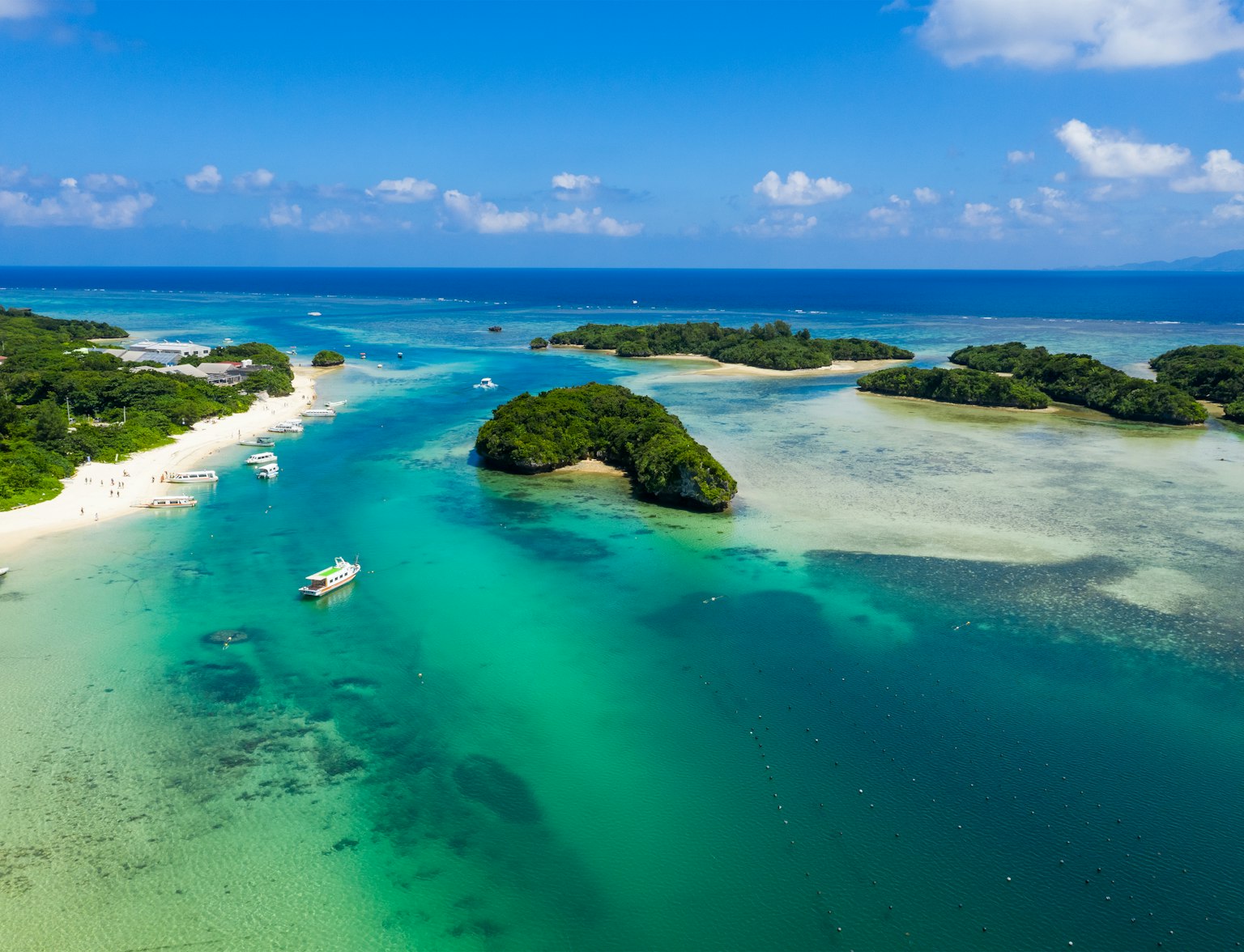
Embark on a captivating journey at Kabira Bay with our glass-bottom boat tour.
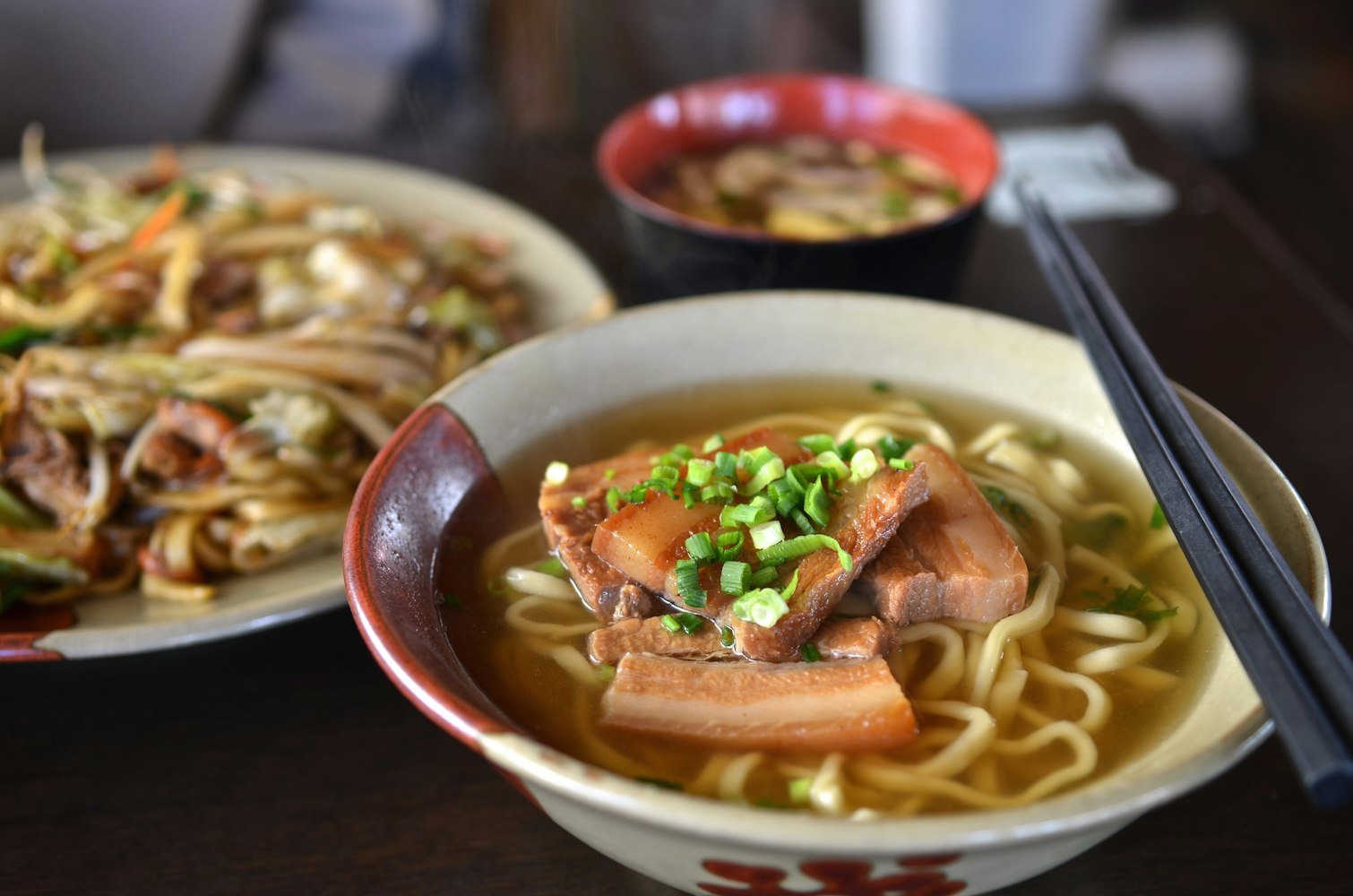
Okinawa Soba is a staple dish of the region. It is made from buckwheat, distinct from the mainland Japanese soba.
Instead, Okinawan soba noodles are made from wheat flour and have a thicker, chewier texture. They are often served in a savory broth made from pork or bonito flakes.
Numerous soba noodle shops throughout Okinawa boast their unique take on this beloved dish, often garnished with slices of tender pork belly, kamaboko (fish cake), and chopped green onions. Embarking on a noodle shop tour to discover your favorite version is a delicious way to experience local culture and cuisine.
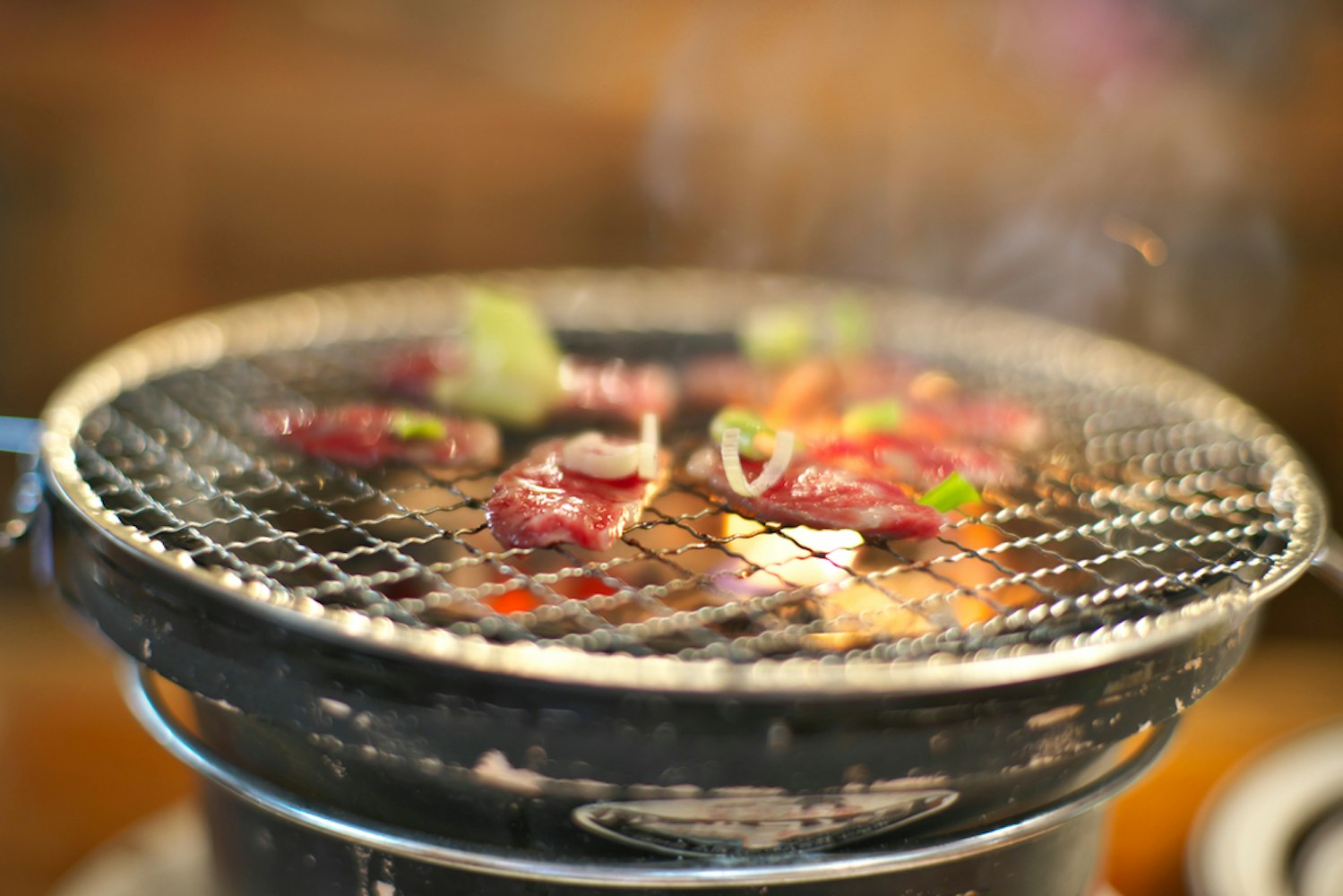
Known for its rich marbling and tender texture, Ishigaki beef is a gourmet delight that food enthusiasts should not miss. This premium beef comes from cattle raised in Ishigaki Island's stress-free, natural environment, contributing to the meat's high quality and distinctive flavor.
Numerous restaurants across the island offer this delicacy, prepared in various styles, such as steak and yakiniku (grilled meat), and even as part of innovative local dishes. Sampling Ishigaki beef is an excellent way to appreciate the island's agricultural heritage and culinary excellence.
Awamori is Okinawa's traditional rice spirit. It has a history of over 600 years, making it the oldest distilled liquor in Japan.
Distinct from sake, awamori is made from long-grain indica rice and has a higher alcohol content. It is typically enjoyed neatly, on the rocks, or diluted with water.
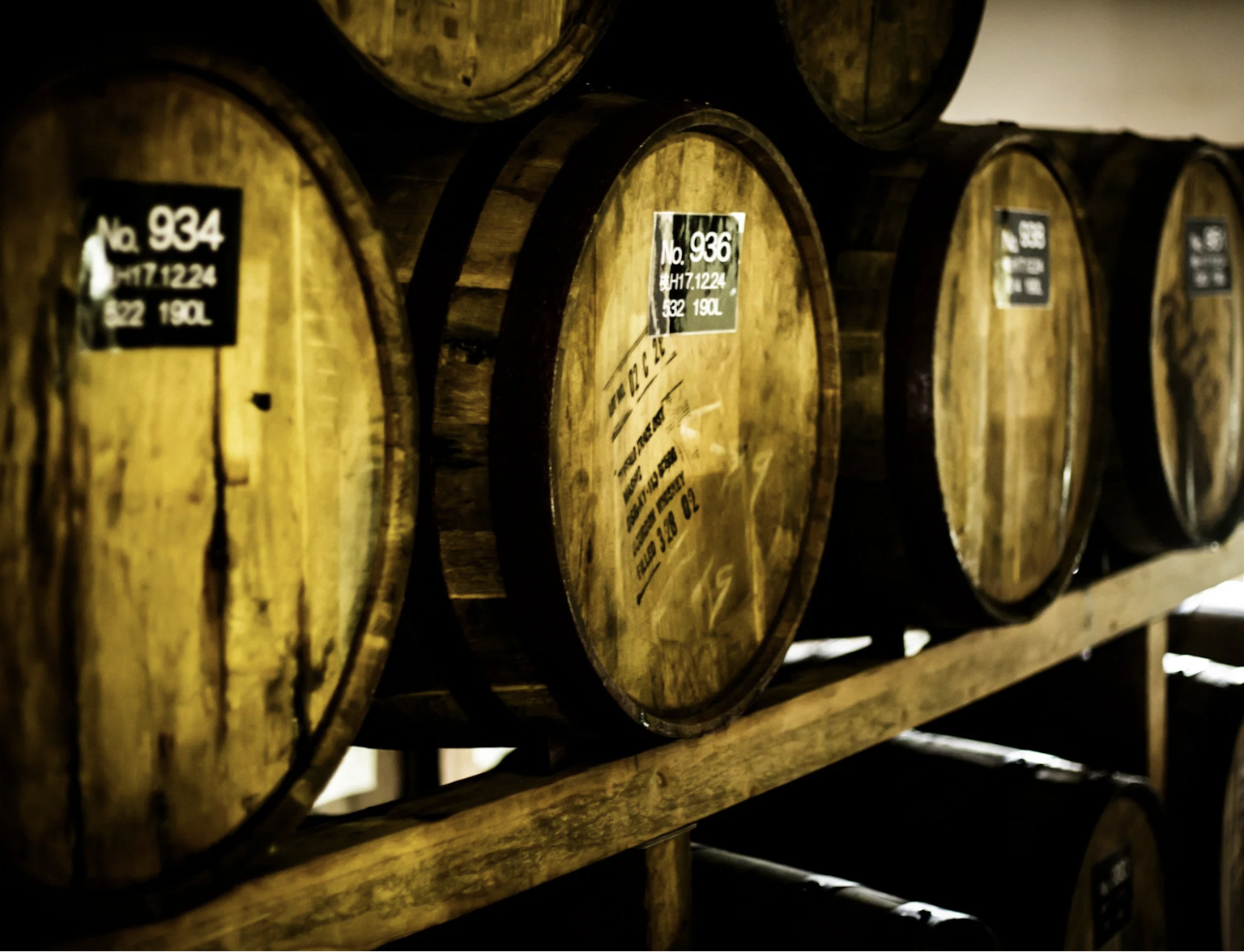
Dive into an immersive Awamori adventure in Okinawa!
For a genuine taste of Okinawan culture, visit one of the local distilleries for a tasting session. Here, you can learn about the production process and sample different ages and brands of awamori, each with its unique flavor profile.
Experiencing awamori is not just about tasting a beverage but delving into a deep cultural tradition of Okinawa.
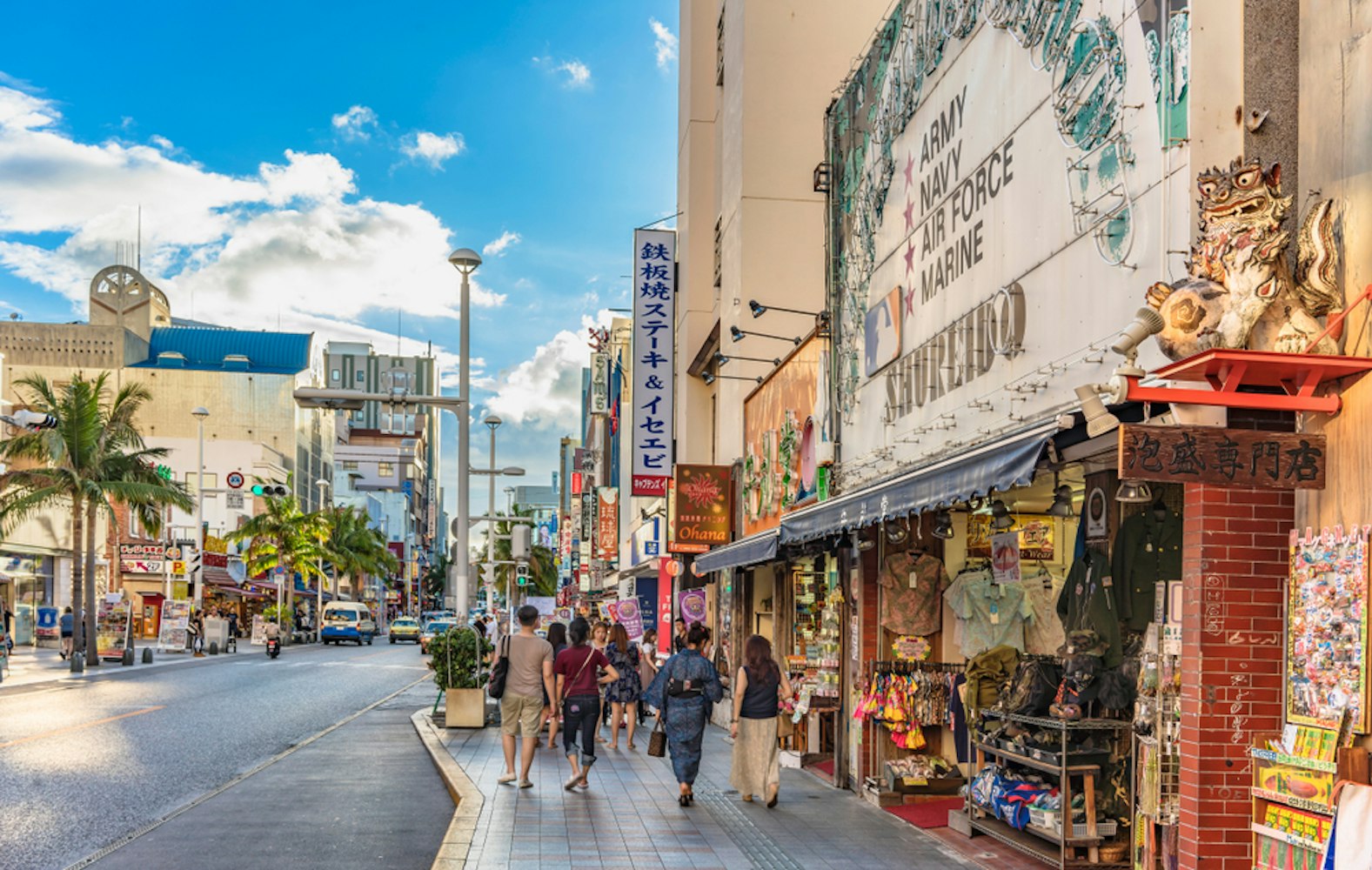
Naha Airport offers excellent connectivity to various domestic and international flights, and travelers can easily reach Kokusai Dori using public transport options like the Yui Rail and monorail. Kokusai Dori, or "International Road," is the bustling heart of Naha and a must-visit for any traveler looking to dive into the vibrancy of Okinawa's urban life.
This lively street stretches nearly 2 kilometers and has diverse shops, restaurants, cafes, and bars. Visitors can find everything from traditional Okinawan crafts and clothing to the latest Japanese fashion and tech gadgets.
The street is also famous for its entertainment options, including live music and cultural performances, making it the perfect spot to soak up local flavors and find unique souvenirs.
Located a short walk from Kokusai Dori, the Tsuboya Pottery District is the historical center of Okinawan ceramics. This area has been the hub of pottery production since the 17th century, specializing in the unique Ryukyu-style pottery known for its earthy textures and vibrant glazes.
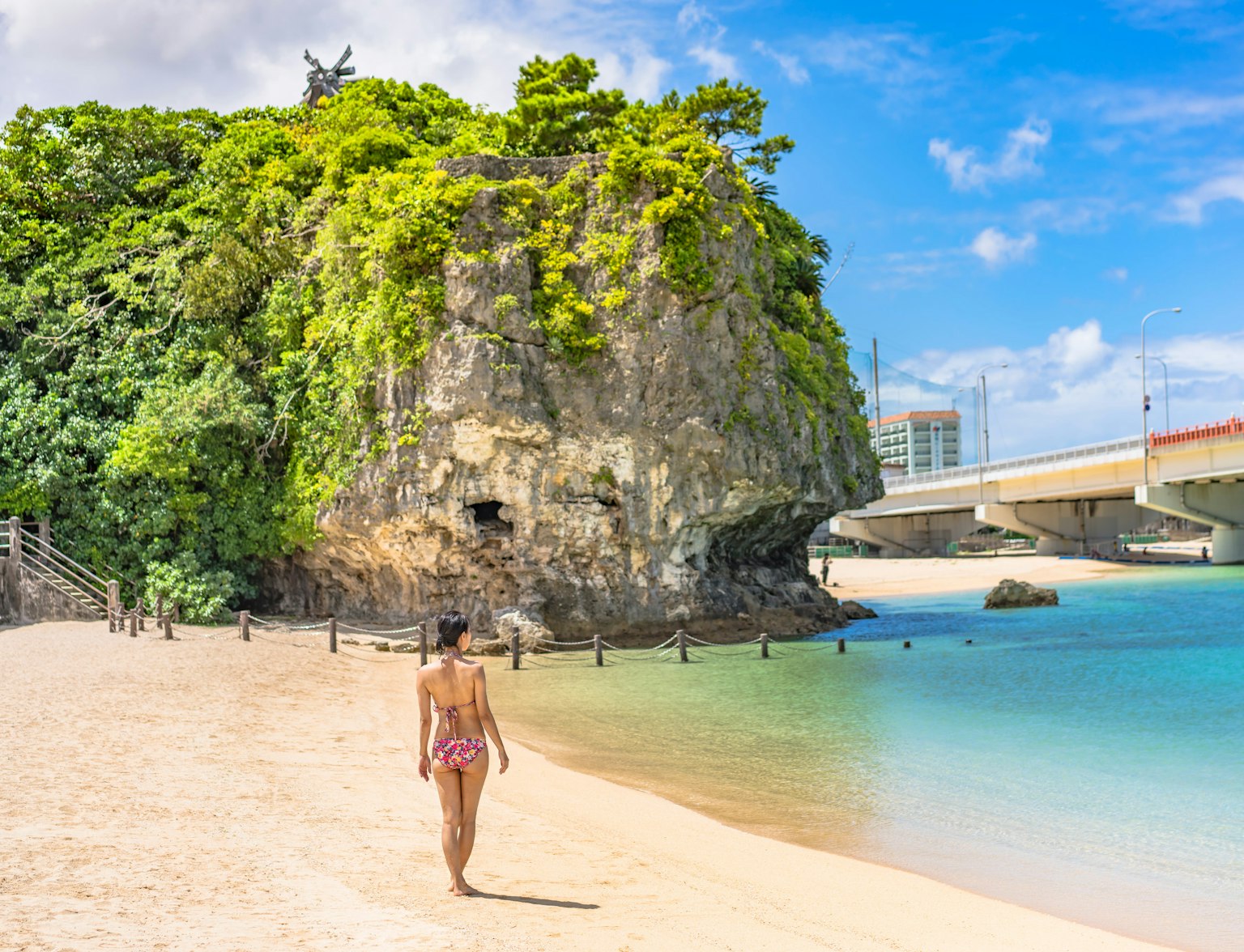
Explore Okinawa your way with a private tour made just for you.
Visitors can stroll through narrow lanes lined with workshops and boutiques offering a range of handcrafted ceramics, from traditional shisa (lion-dog figures) to modern decorative items. Many shops also provide pottery-making seminars, allowing you to create your piece as a special memento.
Local markets such as Heiwa Dori and Makishi Public Market are indispensable for a deeper dive into Okinawan culture and daily life. Heiwa Dori is a covered market street that branches off of Kokusai Dori and offers an array of local foods, spices, and goods.
Just nearby, the Makishi Public Market, known as the "kitchen of Okinawa," provides a vibrant atmosphere where locals and tourists alike come to sample fresh produce, meats, and seafood. It's an excellent place to try local delicacies like pig's feet, sea grapes, and fresh sashimi.
Upstairs, small restaurants serve dishes from ingredients bought downstairs, offering a fresh and authentic dining experience.
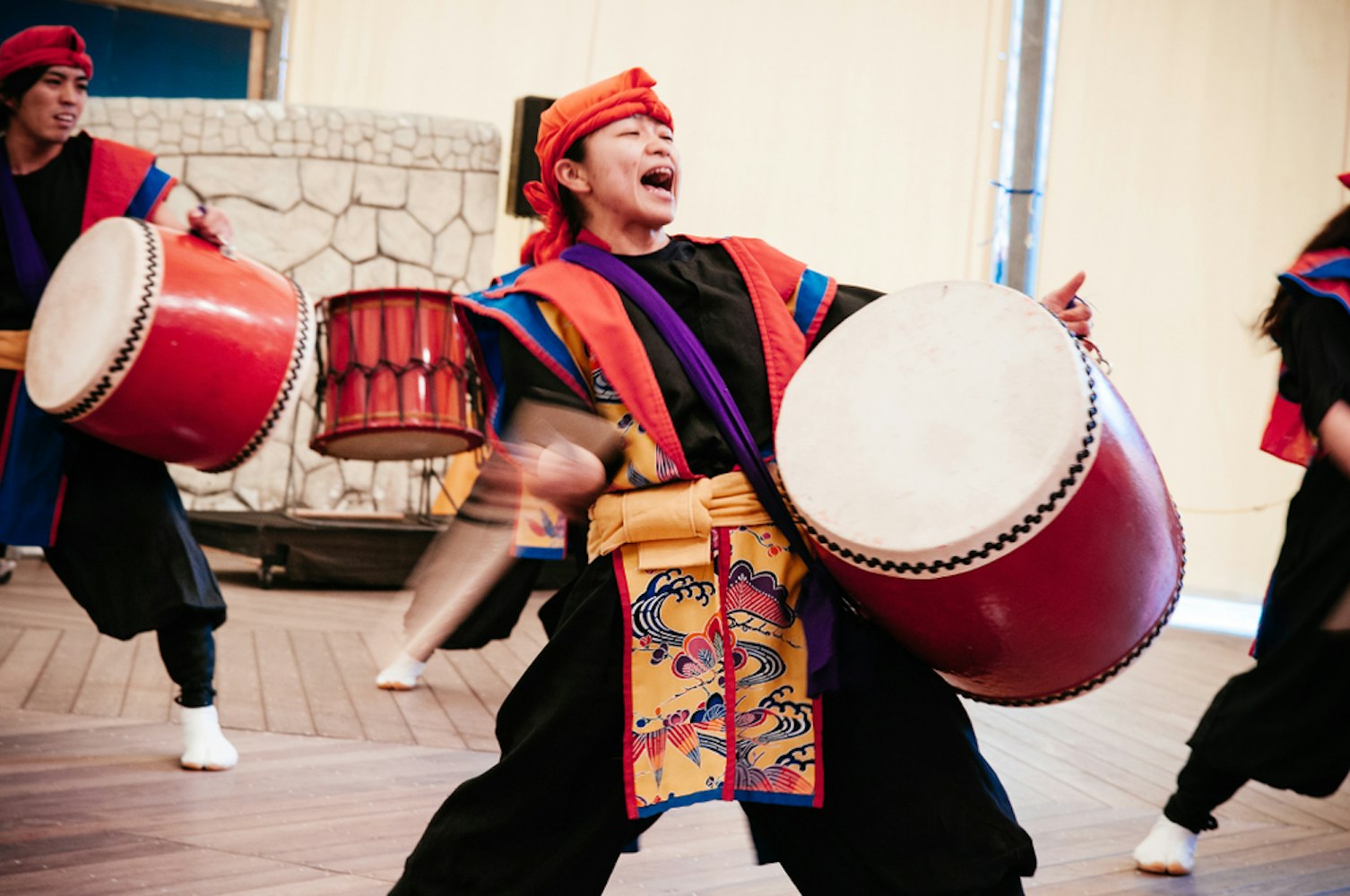
The Eisa Dance Festival is one of Okinawa's most vibrant and colorful cultural events. This conventional festival features Eisa, a form of drum dancing unique to Okinawa.
Performed by young men and women, the dance combines rhythmic drumming, singing, and dancing in a dynamic and spirited display. It is traditionally held to honor the spirits of ancestors during the Obon period, a time for commemorating the deceased.
The festival is particularly famous in the Okinawan cities of Naha, Koza, and Okinawa City, where locals and tourists alike are captivated by the powerful performances and lively atmosphere.
The Naha Tug-of-War is an annual event that draws large crowds with its historical significance and sheer scale. This massive rope event, recognized by the Guinness World Records as the giant tug-of-war in the world, involves a gigantic rope made from rice straw, stretching over 200 meters and weighing over 40 tons.
The event is rooted in a local legend meant to bring good harvests and prosperity to the participants. Participants on either side of the rope pull with all their might in a symbolic communal effort and unity act.
The festival also features parades, traditional performances, and stalls selling local foods and crafts, making it a must-experience cultural spectacle.

While most of Japan celebrates cherry blossoms in the spring, Okinawa's cherry blossoms, or sakura, bloom as early as January. Two of the best places to enjoy these fleeting beauties are Yaedake and Nakijin Castle.
The Yaedake Cherry Blossom Festival in Motobu is set among the mountains, offering a scenic backdrop of vibrant pink blossoms. Meanwhile, the Nakijin Castle Ruins, a UNESCO World Heritage site, provides a historical setting for the cherry blossoms, with the ancient castle walls and gates surrounded by delicate sakura.
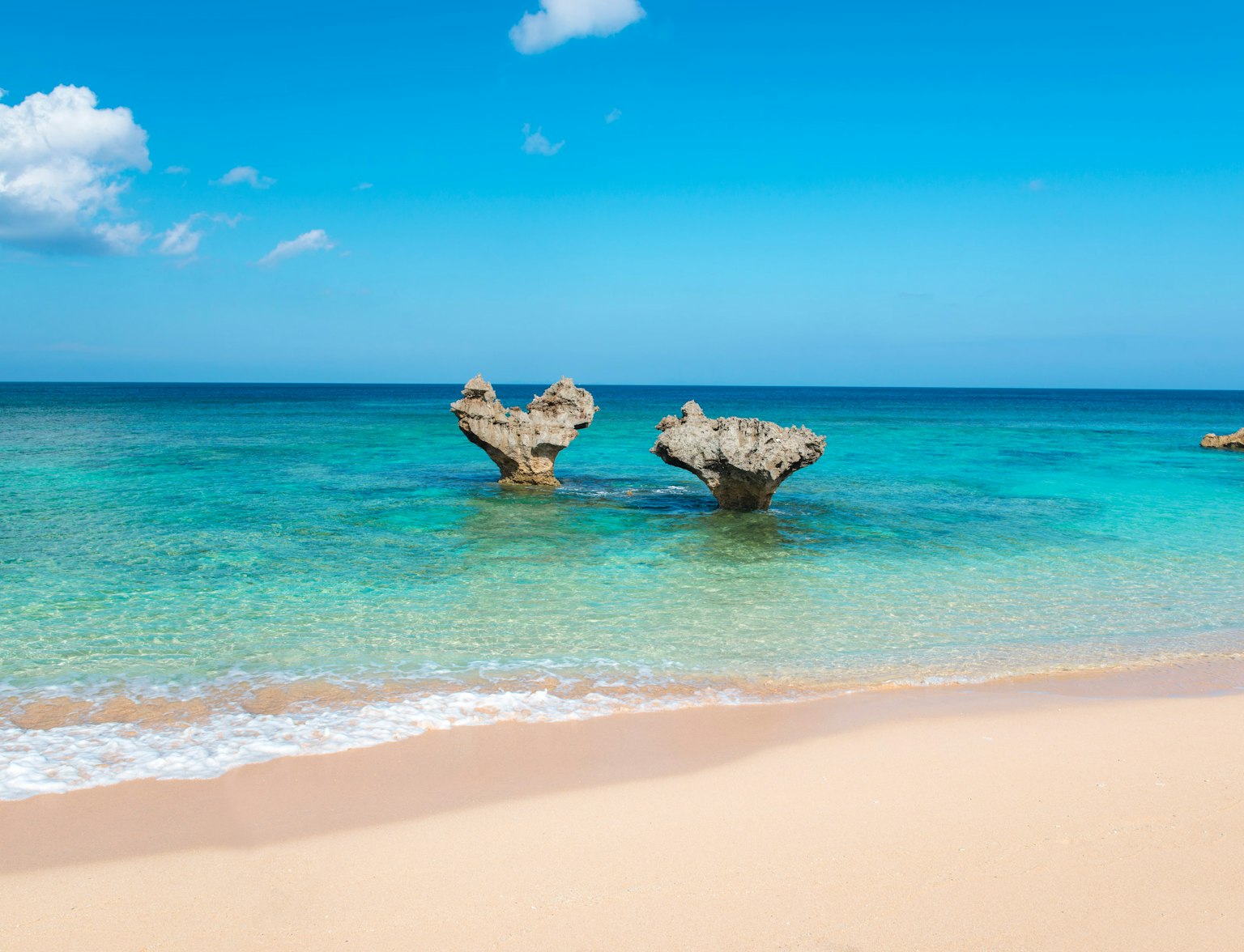
Explore the ancient Nakijin Castle Ruins, where stories of bygone eras whisper from every stone.
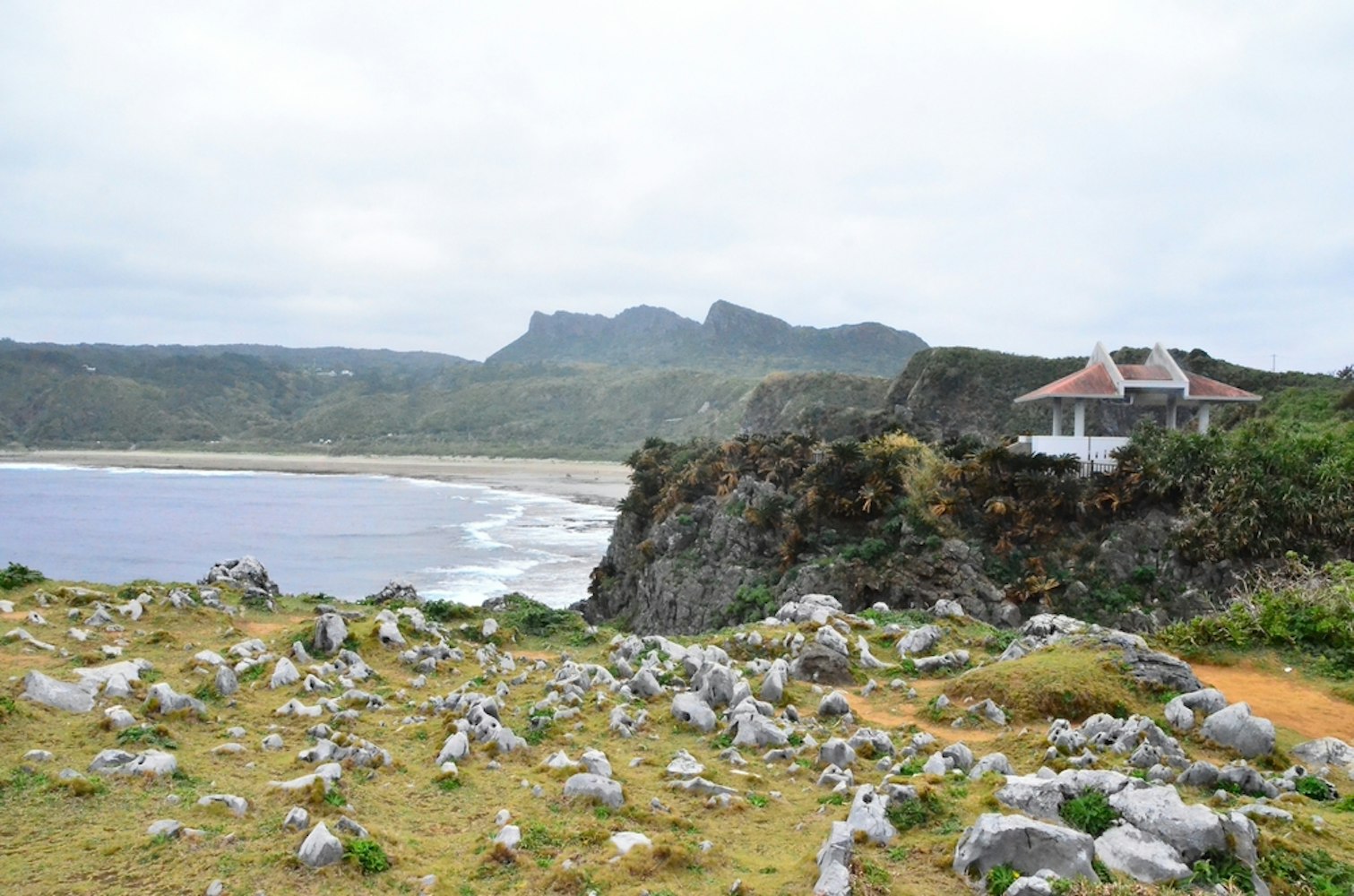
Yambaru National Park in northern Okinawa offers some of the region's most pristine and enchanting environments. The park is renowned for its dense subtropical forests, which host diverse flora and fauna, including several endemic species like the Okinawa rail and the Ryukyu long-haired rat.
Hiking trails in Yambaru vary in difficulty, catering to seasoned hikers seeking challenging routes and casual walkers looking for strolls. These trails offer a fantastic opportunity to immerse yourself in nature, with the lush greenery and the sounds of rare bird species creating a serene hiking experience.
From January to March, the waters off the Kerama Islands coast become one of Japan's best spots for whale watching. During these months, humpback whales migrate to the warm subtropical waters around Okinawa to breed and nurse their young.
Numerous tour operators offer whale-watching excursions from Naha, allowing visitors to witness these magnificent creatures in their natural habitat. Seeing humpback whales breaching and hearing their haunting calls is unforgettable and a must-do for wildlife enthusiasts.
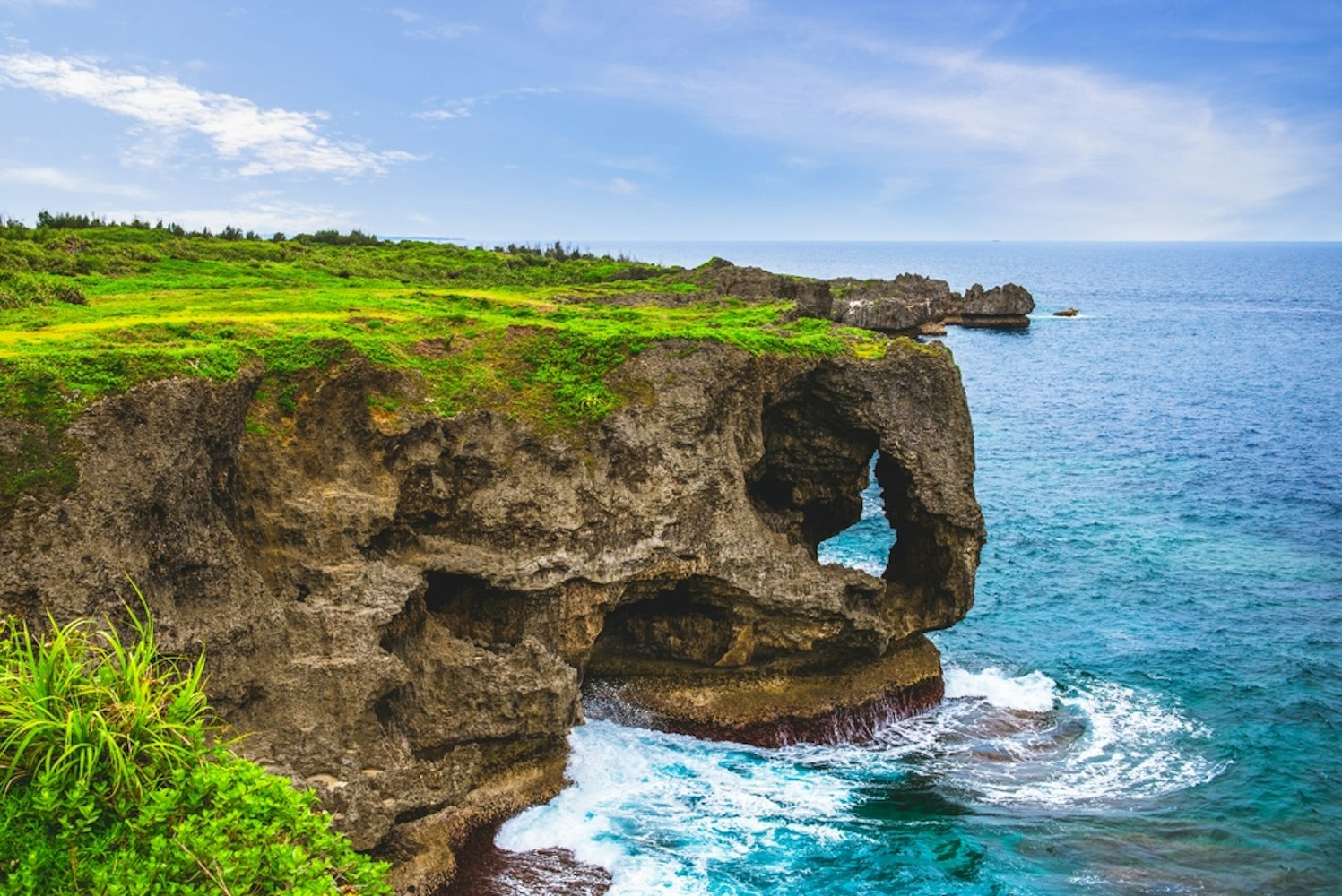
Cape Manzamo is one of Okinawa's most iconic scenic spots. It is famous for its unique elephant trunk-shaped cliff that overlooks the emerald waters of the East China Sea.
Located on the main island near Onna Village, this natural landmark offers stunning views, especially at sunset. The area around Cape Manzamo is ideal for leisurely walks along the cliff's edge, where you can take in the breathtaking panorama of the coast and the vast ocean.
The site is also popular with photography enthusiasts who want to capture the dramatic landscape and serene beauty of Okinawa's coastline.

Okinawa World is a premier cultural theme park showcasing the island's rich heritage and natural beauty. One of the highlights is the Gyokusendo Cave, one of the longest limestone caves in Japan, featuring stunning stalactites and stalagmites illuminated by subtle lighting.
Above ground, the park offers a recreated traditional Ryukyuan village where visitors can learn about and participate in various cultural crafts such as pottery, weaving, and glass blowing. Performances, including traditional Eisa dances and Habu snake shows, add to the immersive experience, making Okinawa World an educational and entertaining outing for the whole family.
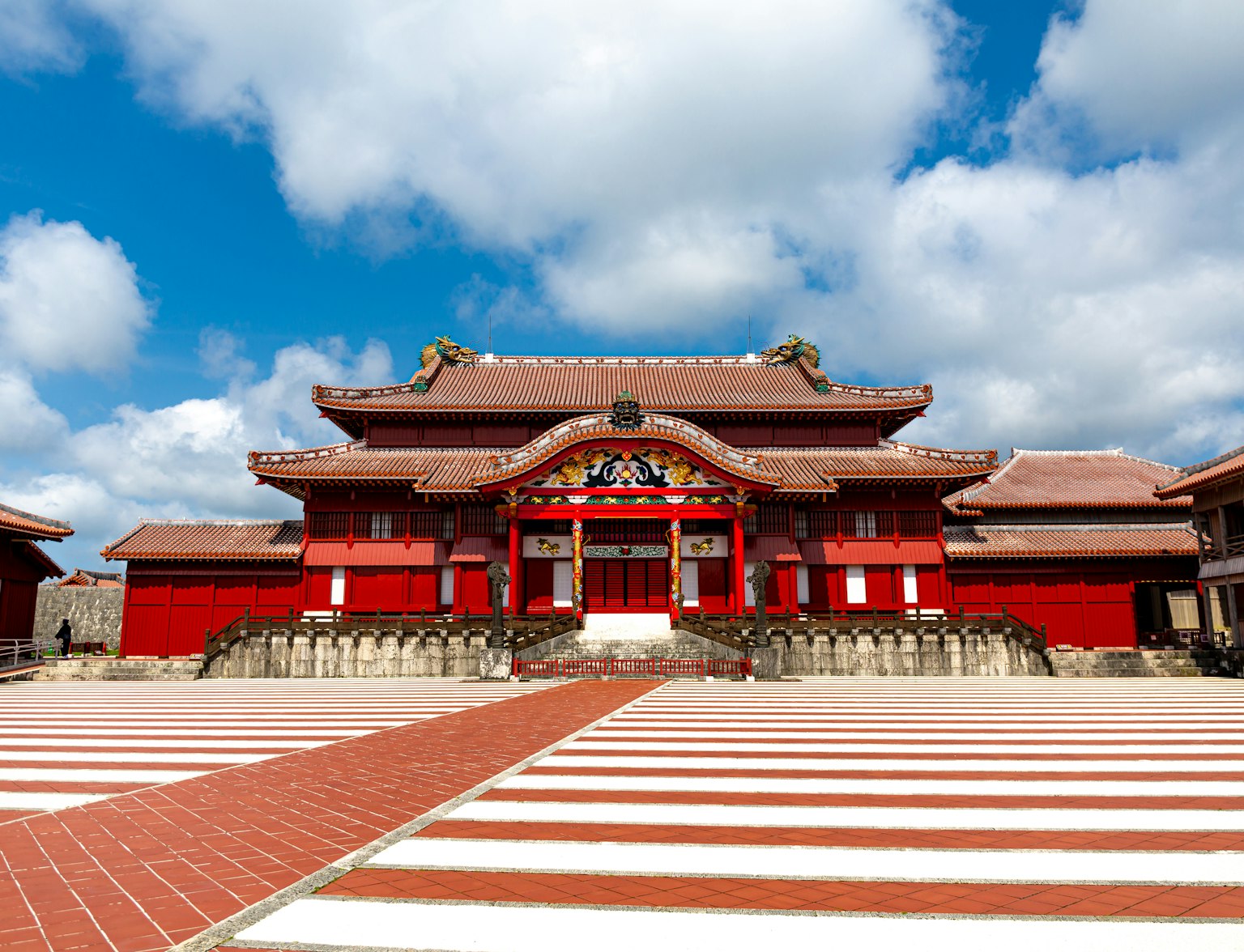
Explore Shuri Castle and Okinawa World with our guided bus tour.
Located in central Okinawa near the U.S. military bases, Mihama American Village resembles a small American town, making it a unique attraction in Japan. This entertainment complex offers a variety of American and Okinawan shops, restaurants, and recreational facilities, including a giant Ferris wheel that lights up beautifully at night.
The area is trendy among families for its child-friendly restaurants, shops, and cinemas, providing a perfect mix of amusement and shopping. The festive atmosphere, complete with periodic live music and performances, ensures visitors of all ages have a delightful experience.
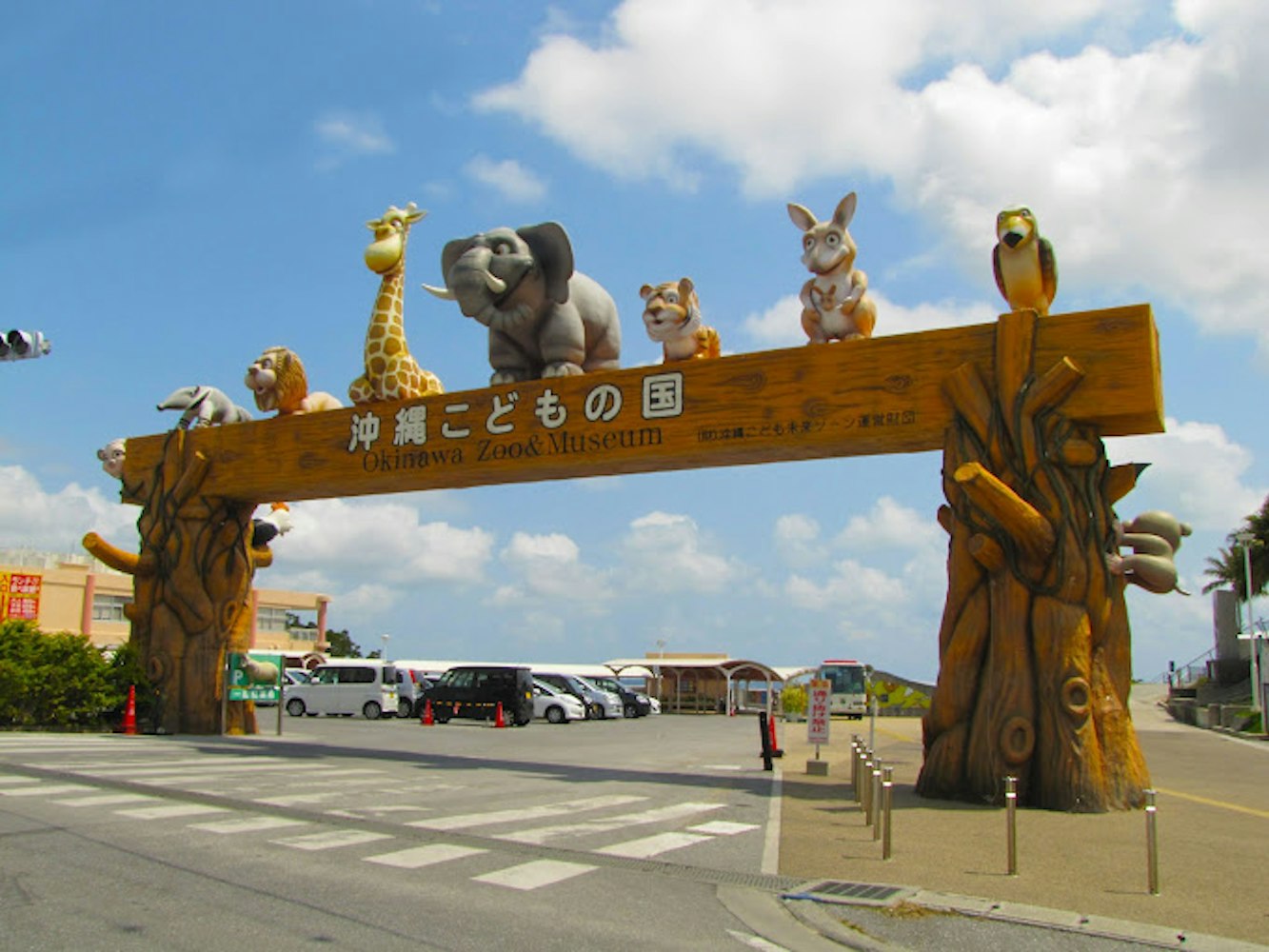
The Okinawa Zoo and Museum offers a family-oriented day out where children can explore wildlife and cultural exhibits. The zoo is home to various animals, including some native species, and provides educational programs about wildlife conservation.
Adjacent to the zoo, the museum features interactive exhibits that engage children in learning about Okinawa's nature, culture, and history. Special events, workshops, and family-friendly activities are often part of the zoo and museum's offerings, making it a comprehensive educational environment where kids can learn about and connect with the world around them in a fun and interactive way.
Reaching Okinawa is a breeze, and frequent flights from Tokyo and other major cities in Japan make it the fastest and most convenient option. For those who prefer a more scenic route, ferries from mainland Japan offer a leisurely journey across the East China Sea.
Once you arrive on the main island, getting around is straightforward. Renting a car provides the most flexibility, allowing you to explore at your own pace.
Alternatively, taxis and public transportation are readily available, ensuring you can easily access all the must-see attractions and activities that Okinawa offers. Whether navigating the bustling streets of Naha or venturing to the serene outlying islands, efficient transportation options make your Okinawa sightseeing adventure smooth and enjoyable.
Okinawa offers a blend of cultural riches, scenic beauty, and thrilling activities that cater to every kind of traveler. From exploring the historical depth of Shuri Castle to soaking up the sun on Naha's beaches and immersing in the underwater wonderland of the Kerama Islands, your trip is guaranteed to be unforgettable.
Remember, Okinawa is more than just a destination; it's an experience that combines tradition, nature, and adventure. Savor the local cuisine, participate in cultural festivities, and take a piece of Okinawa's spirit home.



